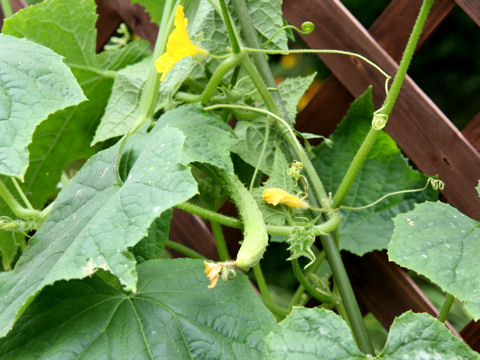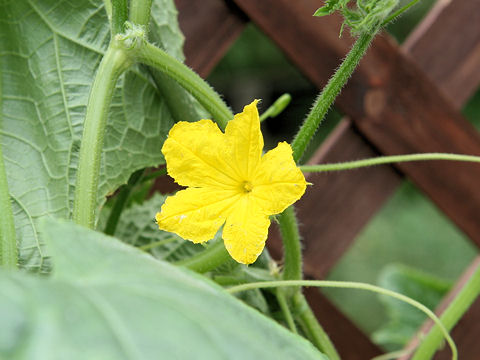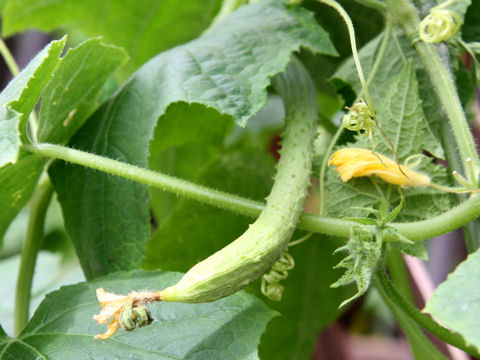 |






|

|
現在の大阪市都島区毛馬の特産品です。江戸時代末期に、台湾から渡来したものと考えられています。茎は細くて節間が長く、葉は淡い緑色です。果実は長さ30センチ、太さ3センチほどになります。上半分が淡緑色から淡黄緑色、下半分は白っぽくなります。いぼは黒いぼですが、小さくて目立ちません。系統的には、北支系雑種とされています。
|

|
ウリ科キュウリ属の一年草で、学名は Cucumis sativus。英名はありません。
|

|
The "Kema-kyuuri" (Cucumis sativus) belongs to Cucurbitaceae (the Gourd family). It is a local variety of cucumber that has been cultivated in Kema area of Osaka-city in Japan. This cucumber was probably introduced from Taiwan in the last days of Edo Era (1603-1868). The stems are slender and have long internodes. The leaves are plale green. The fruit is about 30 cm long and 3 cm across, its upper half is pale green to pale yellowish-green and lower half is whitish. The warts is small, black and inconspicuous.
|

|
大阪府河内長野市「花の文化園」にて、2007年06月29日撮影。
|


